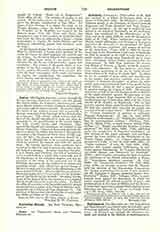

Sfondrati, CELESTINO, Prince-abbot of St. Gall and cardinal, b. at Milan, January 10, 1644; d. at Rome, September 4, 1696. He belonged to the noble Milanese family of the Sfondrati, of which Cardinals Francesco and Paolo Sfondrati and Pope Gregory XIV were members. At the age of twelve he was placed in the school at Rorschach, on the Bodensee, which was conducted by the Benedictines of St. Gall, and on April 26, 1660, he took the Benedictine habit at St. Gall. When twenty-two years old he already taught philosophy and theology at Kempten, and, after his elevation to the priesthood (April 26, 1668), he became professor and master of novices at his monastery. From 1679 to 1682 he taught canon law at the Benedictine University of Salzburg. In 1682 he returned to St. Gall to take charge of a small country church near Rorschach for a short time, whereupon Abbot Gallus appointed him his vicar-general. In 1686 Pope Innocent XI created him Bishop of Novara, a dignity which he accepted only with reluctance. He was, however, prevented form taking possession of his see by being elected Prince-abbot of St. Gall on April 17, 1687. As abbot he set an example of great piety and mortification to his monks, and watched carefully over the observance of monastic discipline; as prince, he ruled mildly and rendered himself dear to his people by his great charity, which he had a special opportunity to practice during the famine of 1693. His learning and piety, as well as his able literary works in defense of the papal authority against the principles of Gallicanism, induced Pope Innocent XII to create him cardinal-priest on December 12, 1695, with the titular church of St. Ciecilia in Trastevere. But he had scarcely reached Rome when his health began to fail. He died nine months after receiving the purple and was buried in his titular church. His chief works are: (I) “Cursus theologicus in gratiam et utilitatem Fratrum Religiosorum” (10 vols., St. Gall, 1670), published anonymously; (2) “Disputatio juridica de lege in prsumptione fun data” (Salzburg, 1681; 2nd ed., Salem, 1718), a moral treatise against Probabilism; (3) “Regale sacerdotium Romano Pontifici assertum” (St. Gall, 1684; 1693; 1749), published under the pseudonym of Eugenius Lombardus, an able defense of the papal authority and privileges against the Four Articles of the Declaration of the French Clergy (1682); (4) “Cursus philosophicus monasterii S. Galli” (3 vols., St. Gall, 1686; 1695); (5) “Gallia vindicata” (2 vols., St. Gall, 1688; 1702), another able treatise against Gallicanism, in particular against Maimbourg; (6) “Legatio Marchionis Lavardini ejusque cum Innocentio XI dissidium” (1688), a short treatise concerning the right of asylum (les franchises) of the French ambassadors at Rome; (7) “Nepotismus theologice expensus” (St. Gall, 1692); (8) “Innocentia vindicata” (St. Gall, 1695; Graz, 1708), an attempt to prove that St. Thomas held the doctrine of the Immaculate Conception; (9) “Nodus prmdestinationis ex sac. litteris doctrinaque SS. Augustini et Thom, quantum homini licet, dissolutus” (Rome, 1697; Cologne, 1705), a posthumous work against the Jansenists, in which the author expounds the difficult question of grace and predestination in the sense of Molina and the Jesuits. It called forth numerous rejoinders but found also many defenders [see Dunand in “Revue du Clergy Francais”, III (Paris, 1895), 316-261.
MICHAEL OTT

